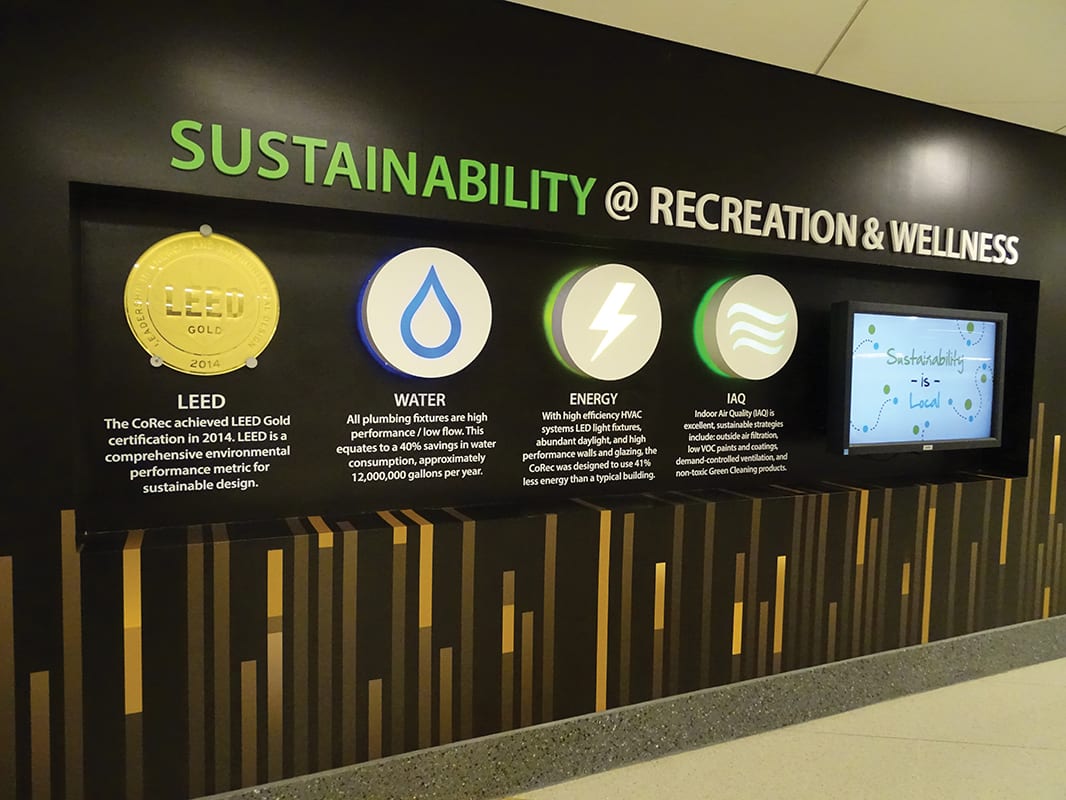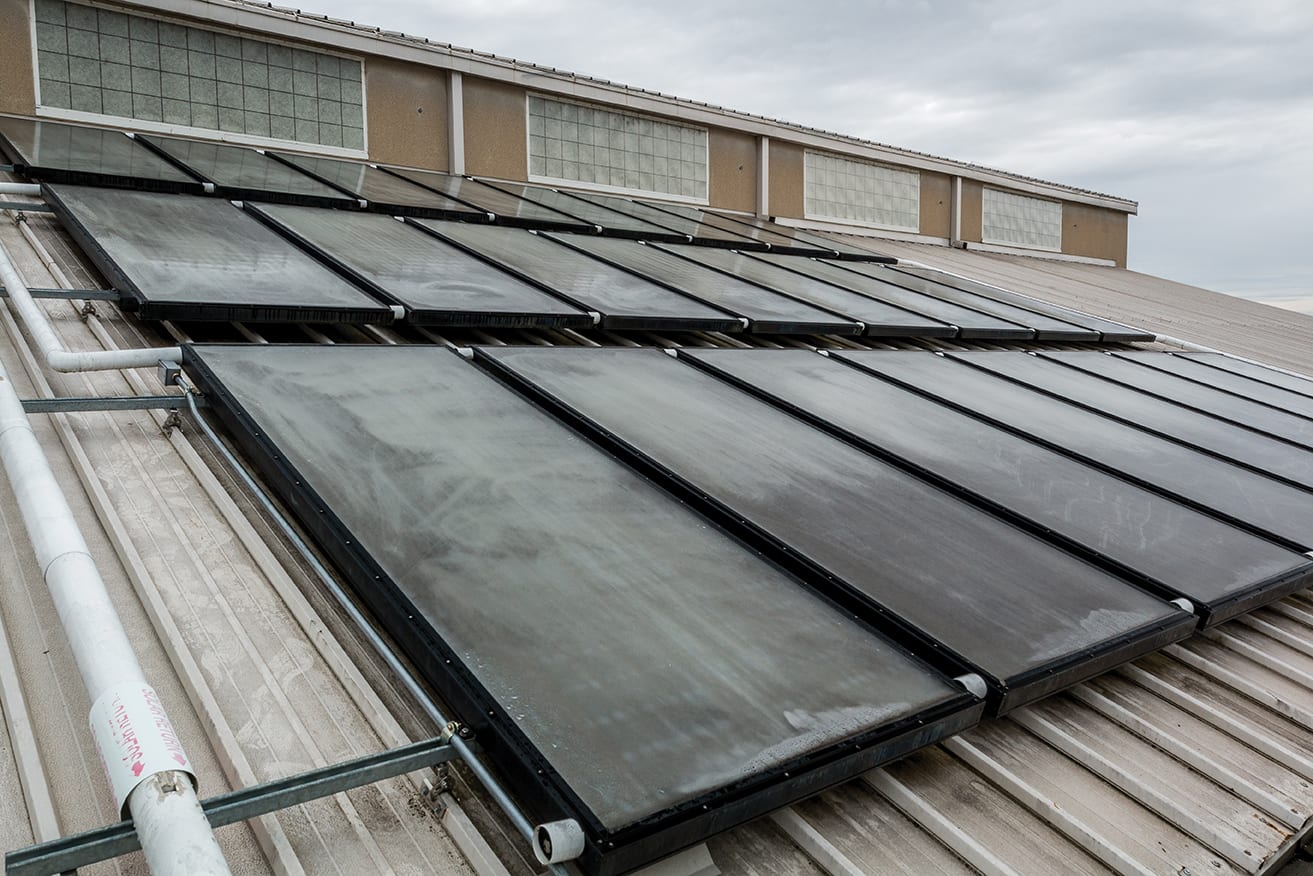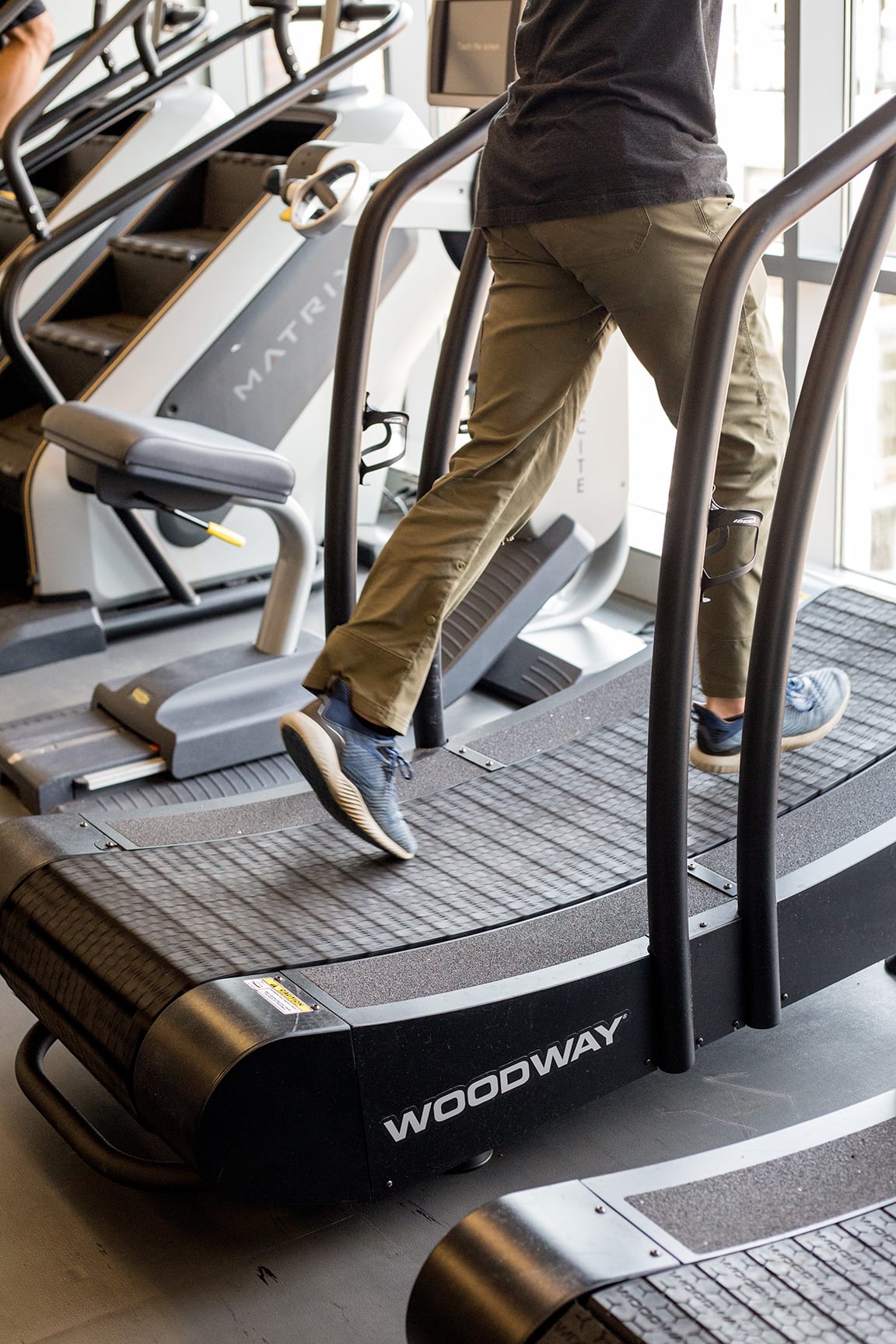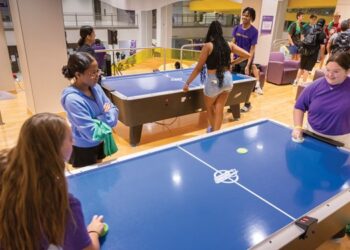Leadership in Energy and Environmental Design (LEED) is one of the most popular green building certification programs used in campus recreation. The program works as a rating system of certified, silver, gold and platinum for the design, construction, operation and maintenance of green buildings. It aims to help building operators be environmentally responsible.
Purdue University France A. Córdova Recreation Center
Because LEED has become so popular, many campus rec departments have decided to take on the challenge. In the case of Purdue University, they were encouraged by their students to pursue certification. “Our students were insistent, even though it was going to cost some additional dollars and a lot of tracking. It was important to them,” said Howard Taylor, the retired director of campus recreation at Purdue University. “So, we went along with their wishes to make that happen.”
Due to large refurbishment and expansion of their 51-year-old recreational sports center, Purdue was able to achieve LEED gold by creating a new and contemporary France A. Córdova Recreation Center. “Anyone who wants to get LEED certified goes through a checklist and sees what they can do to get those points,” explained Taylor.

The categories of the LEED checklist include: location and transportation, sustainable sites, water efficiency, energy and atmosphere, materials and resources, indoor environmental quality, innovation, and regional priority.
Taylor explained when they first began pursuing LEED, it was during renovation. As such, all of the materials that were removed from the existing facility had to be appropriately managed. “Everything had to be weighed and the materials had to be repurposed,” he said. “That was the starting point — making sure we were being sustainable.”
Taylor listed several areas that had a great deal of thought put into them to keep them sustainable:
- Repurposed stones from the old building
- Light sensors
- Daylight harvesting
- High-efficiency lighting fixtures
- Sustainable cleaning products
- Low-flow water fixtures
- Energy efficient chilled beams
- CO2 sensors to measure air control
- Environmentally safe products for playing fields
Also important to Taylor, and necessary to earn points, was the educational component of LEED. “To try and educate people who are using the building about some of the features, we recently completed a display in the very front entrance of our building that explains about LEED,” said Taylor. “We have a digital display where we are alternating sustainability messages to try and allow people to learn more about it.”
Taylor explained by having the display, they can update the information with fresh data about green initiatives and sustainability issues. It also shows people coming into the building what they’ve worked hard for, creating an aspect of pride.
To complete certification, a key aspect of Purdue’s gold status was a partnership with one of their LEED certified architects, Sara Boyer of Moody Nolan, who helped by tracking and reporting the process — a large component of becoming certified.
Since Purdue’s rec center became certified, Taylor has noticed many other buildings on campus earning their certification as well. “Purdue honestly had always been building pretty efficient buildings,” he said. “It was making the decision to say, ‘We’re going to track and demonstrate it’ that led to achieving the LEED certified status.”
The University of Oregon Student Recreation Center
After a three-phase renovation, the University of Oregon student recreation center was awarded LEED platinum, the highest level of sustainability and the largest of three campus rec facilities in the U.S. to be awarded LEED platinum.
“Perhaps the most important contribution toward sustainability the physical education and recreation department makes is through equity, diversity, and inclusion initiatives and programs,” said Tiffany Lundy, the associate director for facilities and operations at the University of Oregon. “Our core purpose is to educate, engage and inspire the campus community to live active, balanced lives. Health, fitness and recreation are an essential component.”
Similar to the sustainability efforts of Purdue, Oregon’s campus rec also takes pride in educating its visitors on how they came to be one of the best in green initiatives.

A simple and effective change they made to earn LEED points included becoming paper-free with signage and bathroom paper towels. They use alternatives such as digital signage, air hand dryers and washable cleaning rags. To further reduce environmental impact, Oregon incorporates electronic means of file storage and registration, as well as electronic check-in stations and a shared file system for storing documents rather than printing.
As part of the renovation, Lundy described how instead of demolishing their old Leighton pool, they repurposed it into an underground cistern. “Rainwater captured is used for flushing toilets and urinals as well as irrigation,” she explained. “Purple PVC pipe is used to differentiate this non-potable water and resides under the main lobby.”
This system collects, treats and repurposes 400,000 gallons of water annually. “A life cycle cost analysis of the cistern system for the next 30 years estimates the system will save us between $192,000 and $288,000,” said Lundy.
Within energy saving, Oregon also incorporates radiant floor heat and chilled beams to maintain facility temperatures. “Active chilled beam systems are used throughout the facility for heating and cooling,” explained Lundy. “They use ceiling diffusers with the energy-saving benefits of heat transfer using water to reduce energy consumption.”
Having the opportunity to inspire and educate, Lynn Nester, the director of physical education and recreation at the University of Oregon, elaborated on the importance of raising expectations. “I would advise others to do what they can to make the long-term sustainable decision and communicate this with your community,” she said. “At face value it might cost more, but over time you will see the return on the investment, not only in the physical facilities and equipment but also in the care that is given to the environment and community.”
Portland State University Academic & Student Recreation Center
Constructed in 2009, the academic and student recreation center at Portland State University (PSU) holds a status of LEED gold and continuously works to improve it. “There is always work to be done and improvements to be made,” said Todd Bauch, the associate director of operations and student development at PSU. “Our process is not a ‘one and done’ — we are expected to re-examine our practices every year or two.”
Last year, PSU’s campus rec strategic plan committee created a goal to continuously operate sustainability. “With this goal, the committee encourages our staff to create specific, measurable tactics to work on throughout the year that promote our holistic sustainable measures,” added Tyler Baker, the facility coordinator at PSU. “These tactics are routinely checked in on throughout the year in staff meetings and workshops.”
One of the ways they implement sustainability is by creating a rubric to review rationale for anything they give away — food or product. Additionally, PSU uses local “swag” vendors to reduce shipping impacts on give-away items. They also consider packaging and the materials that go into making products.
One unique program at PSU involves partnering with PSU EcoReps and matching student volunteers with department sustainability projects. “The volunteers put dozens of hours into projects we have interest in but not enough time to do the deep dive to inform ourselves,” explained Bauch.
One such project is zero-waste events. “Departmental events serving less than 100 people use washable plates, bowls and utensils for events,” said Bauch. “If there is a bigger event and we know there will be paper, different food is selected to reduce waste.” For example, if they serve ice cream, they offer cones to eliminate the use for bowls.

Cutting the cords on fitness equipment is another sustainability effort at PSU. “We have begun to explore the motor-less treadmills,” said Bauch. “We have two Woodway Curves and a Technogym SKILLMILL.”
Additionally, they are debating about equipment with cable TV or internet built in due to most of their members having smartphones, resulting in no need for machines with these features. Wi-Fi would be the better investment.
In the end, PSU finds campus sustainability is all a matter of tradeoffs and values. “As people, organizations and communities, we need to work to reduce our footprint while impacting positive change,” said Bauch. “This is one of the reasons campus rec really appreciates the NIRSA sustainability model — it looks to sustain the environment, lift the people and propel organizations into the future.”










